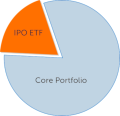The profile of the IPO market is currently at its highest level in a decade thanks to a wave of fast-growing second-generation Internet IPOs and pending offerings from some even more hotly anticipated companies. US IPOs like LinkedIn, Pandora and HomeAway and international firms like Renren, Youku.com and Yandex are commanding billion-dollar valuations. There are rumors of $20 billion+ valuations for Groupon and Zynga and a possible $100 billion market cap for Facebook when they follow suit in entering the public markets in the coming months.
Public and private valuations imply EV/Sales and P/E ratios for these stocks that are exceptionally high even for growth companies, as the table below shows, and differing assessments of their prospects and valuations have caused trading to be highly volatile for those that have already gone public. The real question is whether their earnings power will ultimately meet or exceed the market’s expectations. To assess their chances of doing so, we mined our historical data on prior Internet IPOs.
The largest distinction is how indiscriminate the tech bubble was. Back then, dozens of young Internet companies were awarded stratospheric valuations, even though many of them had very little revenue or had yet to demonstrate that they had viable business models. eToys and Webvan each had $9 billion valuations soon after their IPOs, for example, despite little revenue for the former and negative gross margins for the latter.
By contrast, the hype today is centered around a select batch of about a dozen companies, all of which have achieved significant user traction that has translated into substantial revenue and, in most cases, positive cash flow. While not all are profitable, the financials that are publicly available suggest that these companies at least have a workable path to profitability, or the ability to generate earnings should they choose to scale back on investments in future growth. At the same time, other lower-quality Internet companies attempting IPOs are spurned by investors; adult social networking firm FriendFinder priced its IPO at the low end of its range and fell 22% on its first day, while online finance information aggregator Bankrate traded modestly since pricing its IPO at the midpoint of the range. Thus, investors are differentiating between the strongest companies with the largest opportunities and the second-tier or slower-growing players.
Read our full commentary on why this generation of Internet IPOs is different.


